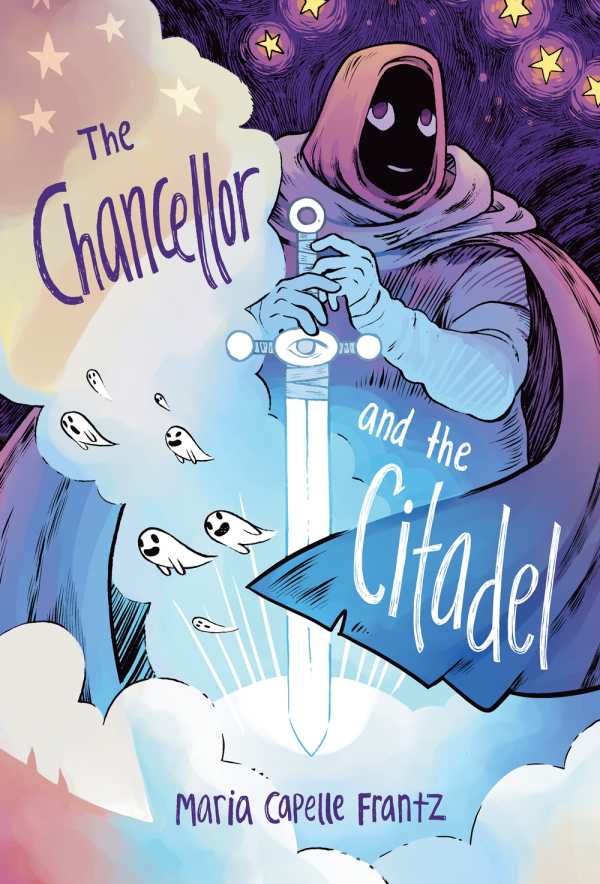The Chancellor and the Citadel
In Maria Capelle Frantz’s affecting, allegorical graphic novel The Chancellor and the Citadel, the Chancellor, a mysterious hooded figure with seemingly magical powers, protects a city’s citizens from their enemies. In the process, she seriously injures a young boy.
Olive, the Chancellor’s closest friend, helps the boy (revealed with shock and fright to be “human”) recover as the city is thrown into chaos and mistrust of the Chancellor’s power spreads. The morality of killing and the nature of courage are explored. In one of the book’s most poignant scenes, the Chancellor seeks answers from an unnamed higher power, which informs her that there are no “good” or “bad” guys, “but there are those who do bad things” out of fear and anger.
A potent but kid-friendly look at how people become divided, the book is painfully relevant in today’s political climate. Frantz’s art is expressive, but the story relies heavily on the reader to ignore or fill in the gaps. There’s no explanation of how the Chancellor gained power or a position as the town’s protector, or how long that’s been the case. Inside the citadel, the Chancellor says “I made this place,” but the humans at the city gate speak of taking their lands back. While the outsiders are called “human,” it’s never clear exactly how the city residents are not.
Maybe that’s all part of Frantz’s message: that it doesn’t matter what the characters are, or how they arrived at this point, only what they do in the future. Though younger readers might be left wondering about the unknowns, The Chancellor and the Citadel delivers its conflict-resolving moral eloquently and memorably.
Reviewed by
Peter Dabbene
Disclosure: This article is not an endorsement, but a review. The publisher of this book provided free copies of the book to have their book reviewed by a professional reviewer. No fee was paid by the publisher for this review. Foreword Reviews only recommends books that we love. Foreword Magazine, Inc. is disclosing this in accordance with the Federal Trade Commission’s 16 CFR, Part 255.

